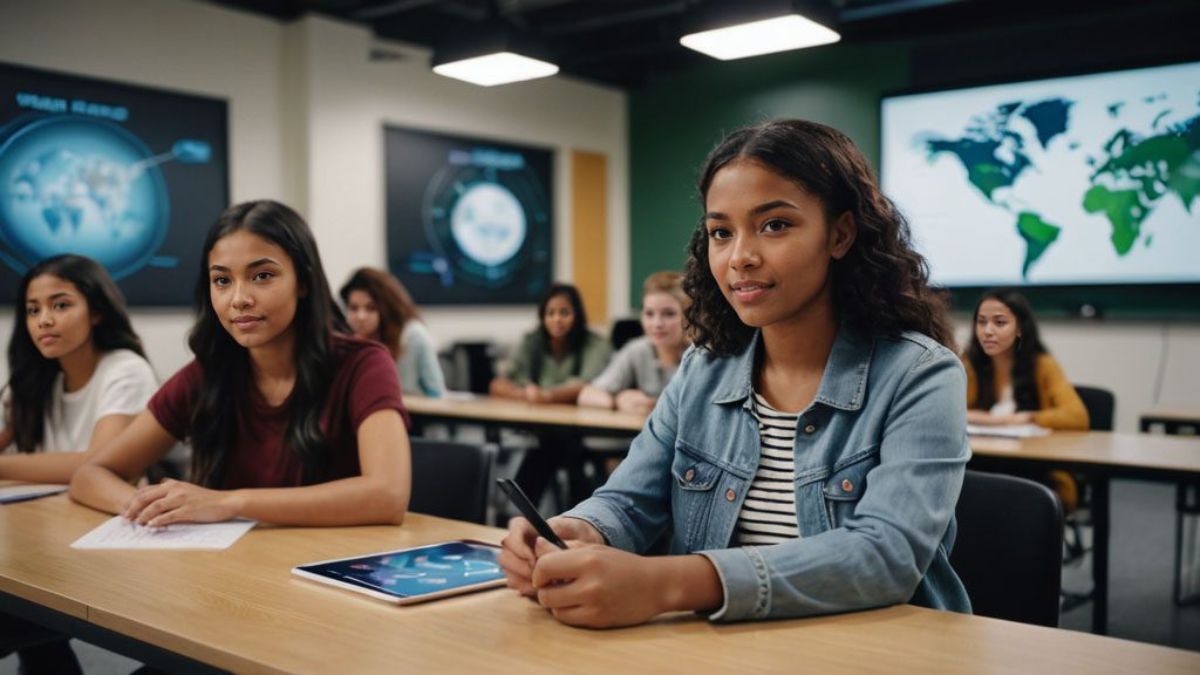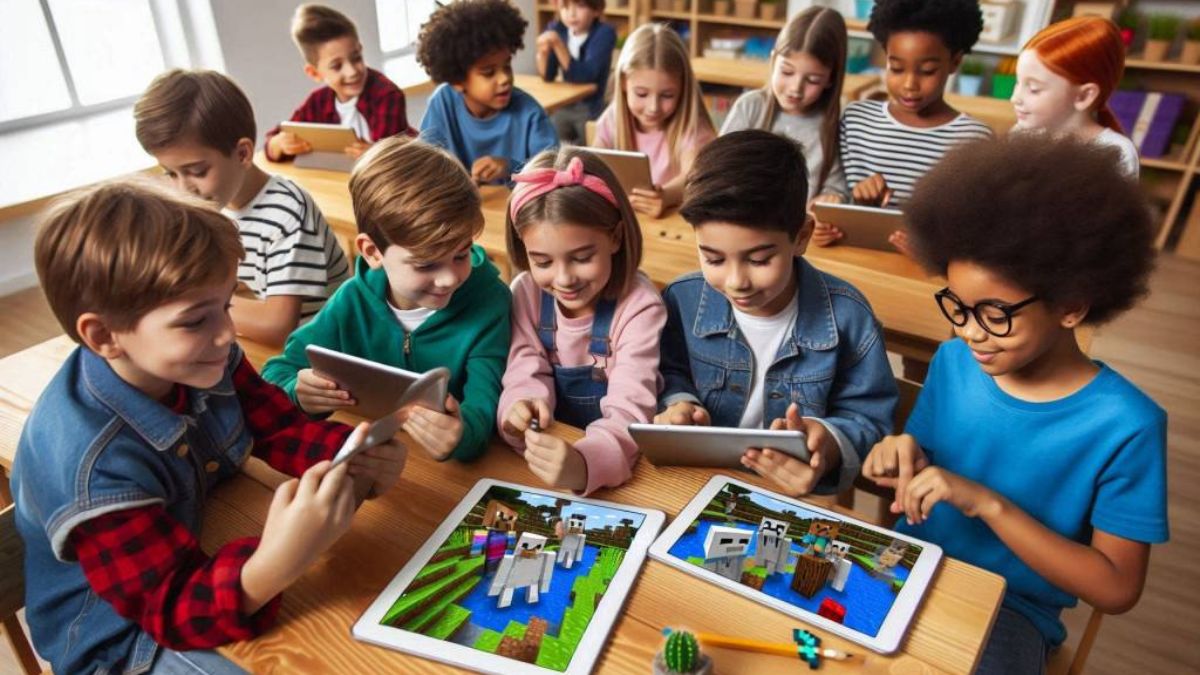Artificial intelligence (AI) is no longer confined to the realm of science fiction. It’s making waves across many industries, and one area where its impact is particularly profound is education. From personalized learning experiences to automated administrative tasks, AI is reshaping the way students learn and educators teach. But what does this actually mean for schools, universities, teachers, and learners?
In this blog post, we’ll explore how AI is used in education, its potential benefits, challenges that come along with it, and what the future holds for this evolving technology.
What Role Does AI Play in Education?
Artificial intelligence in education refers to the use of machine learning algorithms and smart technologies to enhance learning experiences, improve access to education, and simplify teaching tasks. While AI doesn’t replace teachers, it focuses on complementing their efforts by making education more efficient, personalized, and accessible.
Examples of AI in action within education include virtual tutors, personalized adaptive learning platforms, grading automation, and intelligent content delivery systems. Whether it’s creating tailored lesson plans or providing instant feedback, these tools are helping educators and students in ways that were unimaginable just a few decades ago.
Below, we’ll walk through the specific ways AI is revolutionizing different facets of education.
How AI Is Changing the Classroom
1. Personalized Learning
Every student learns at a different pace, and traditional one-size-fits-all education approaches often fail to accommodate this diversity. This is where AI shines — by customizing learning to fit individual needs.
AI-powered adaptive learning tools, such as DreamBox, Carnegie Learning, and Squirrel AI, analyze a student’s progress, strengths, and weaknesses. Based on this data, they deliver content tailored to challenge the student just enough to keep them progressing without causing frustration.
For example, if a middle schooler struggles with linear equations, AI software adapts the curriculum to offer focused practice exercises and instructional videos. Meanwhile, a student excelling in the subject might receive advanced problem sets to keep them engaged.
This level of personalization not only improves learning outcomes but also boosts student engagement and motivation.
2. Automated Administrative Tasks
Grading assignments, handling attendance, and generating reports are necessary but time-consuming tasks for educators. AI tools can now handle these repetitive processes, freeing up teachers’ time to focus on creating meaningful classroom interactions.
For example, platforms like Gradescope can auto-grade multiple-choice tests and even assist with short-answer responses by recognizing patterns in correct answers. AI also helps track attendance through facial recognition or automated check-ins.
This automation doesn’t just save time; it reduces human error and ensures a more consistent evaluation process.
3. Improved Accessibility
AI technologies are also breaking down barriers to education for students with disabilities or those living in remote areas.
Tools such as text-to-speech software, speech recognition, and real-time language translation allow students who are visually impaired, hearing impaired, or non-native speakers to access high-quality education alongside their peers. Apps like Microsoft’s Seeing AI or Google Translate can make classroom content instantly understandable and accessible.
Virtual classrooms powered by AI also mean that students in underserved regions can access quality educators and learning materials regardless of their location. AI-driven platforms like Khan Academy and Coursera are playing a significant role in democratizing education around the globe.
4. Smart Content Creation
AI is enabling educators to rethink how learning content is delivered. Tools like Quizlet and Content Technologies, Inc. can generate customized learning materials, such as flashcards, chapter summaries, and quizzes. AI can even transform traditional textbooks into interactive lessons with videos, simulations, or voiceovers.
This makes complex concepts easier to grasp and encourages active rather than passive learning. Plus, with smart content tools creating study resources in real time, students are always reviewing the most up-to-date material.
5. Virtual Tutors and Assistance
Not every student has access to one-on-one tutoring — until AI changed the game. Virtual tutors such as EdTech platforms (e.g., Duolingo for languages or ALEKS for math) now provide 24/7 assistance by answering questions, offering practice tasks, and clarifying doubts.
Even beyond academics, AI chatbots can help students in administrative areas, like navigating admissions or figuring out campus logistics. The instant, always-available nature of AI tutoring encourages students to seek help whenever they need it.
Challenges of Implementing AI in Education
While the integration of AI into the classroom is exciting, it’s not without challenges. Schools, educators, and policymakers must consider the following hurdles when implementing AI-driven teaching tools.
- Cost: Advanced AI systems often require significant investment in both hardware and software infrastructure, which can be inaccessible for underfunded schools or underserved regions.
- Data Privacy: AI relies heavily on data, including sensitive information about students. Ensuring this data is secure and used ethically is a constant challenge.
- Teacher Training: For AI tools to work effectively, educators must know how to use them. Professional development and upskilling programs need to be developed to prepare teachers for AI integration.
- Equity Concerns: Not all students have equal access to the devices or internet connectivity needed to use AI tools, which can exacerbate existing inequalities.
The Future of AI in Education
The potential of AI in education is limitless. As the technology matures, here are a few advancements we can expect to see in the years ahead:
- Hyper-Personalized Education: With advancements in AI, learning could become even more customized. Imagine a classroom where each student’s curriculum is entirely unique, evolving dynamically as they progress through topics.
- Real-Time Emotional Analysis: AI may eventually be able to assess student emotions through facial recognition or voice analysis, adjusting instruction based on engagement and mood.
- AI-Assisted Career Guidance: Career counseling tools powered by AI could analyze a student’s performance, interests, and aspirations to provide tailored advice about potential career paths.
- Global Collaboration: AI-powered platforms could connect classrooms worldwide, allowing students from different backgrounds to collaborate and learn from one another in real time.
Unlock Better Learning with AI
AI in education is not just a trend — it’s a tool reshaping how we think about teaching and learning. By enabling personalized experiences, automating tedious tasks, enhancing accessibility, and improving classroom intelligence, AI is creating opportunities for both students and educators to achieve their full potential.
However, implementing AI effectively requires thoughtful planning and collaboration between educators, tech developers, policymakers, and parents. Only then can we unlock its full potential to drive meaningful change in education.
Curious about how AI can help elevate your teaching strategies or learning outcomes? Start exploring AI-powered tools and see what works best for you!
FAQs
What is AI in education?
AI in education refers to the use of artificial intelligence technologies to improve teaching, learning, and administrative processes. This includes tools like adaptive learning platforms, virtual tutors, and automated grading systems that personalize and streamline the education experience.
How can AI benefit students?
AI can benefit students by offering personalized learning pathways, helping them progress at their own pace and addressing specific areas where they need more support. It can also provide instant feedback, access to a wealth of educational resources, and opportunities for more engaging digital learning experiences.
What role do educators play in implementing AI?
Educators play a critical role in selecting, adapting, and integrating AI tools into the classroom. Their insights ensure that these tools meet the unique needs of their students while complementing traditional teaching methods, rather than replacing them.
Are there any challenges to using AI in education?
Yes, challenges include concerns about data privacy, equitable access to AI tools, the potential overreliance on technology, and the need for proper training for educators to use AI effectively. Collaboration among all stakeholders is essential to overcome these challenges.
Can AI replace teachers?
AI is a powerful tool to support teachers but cannot replace the human connection, understanding, and creativity that educators bring to the learning process. Instead, AI works best when used to complement and enhance traditional teaching.
Have more questions? Feel free to reach out or explore further to discover the possibilities AI can bring to education!










